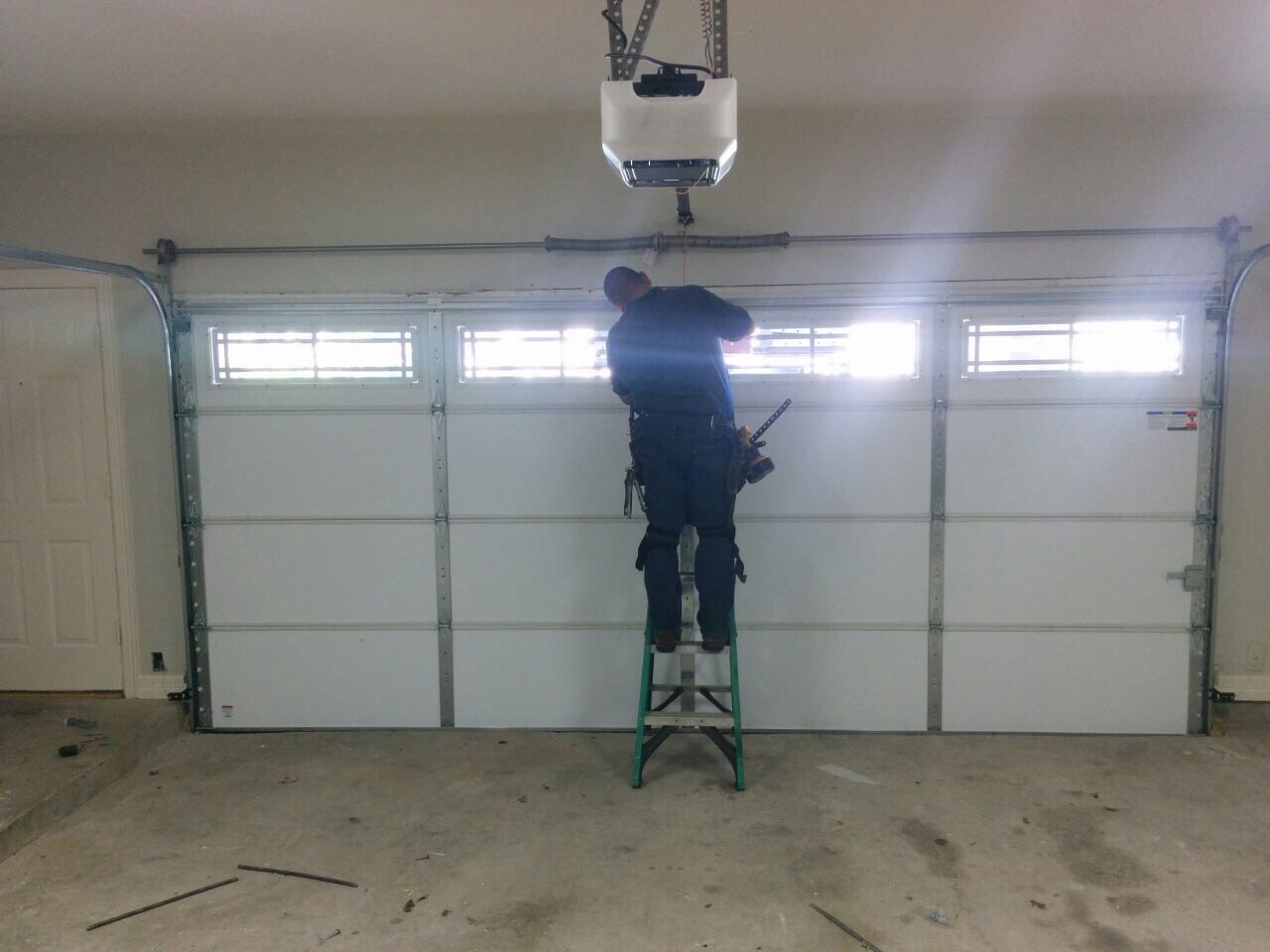Typical Garage Door Troubles and How to Deal with Them
Garage doors are necessary for both security and ease, yet they often provide a range of typical problems that can frustrate homeowners. While some issues might appear uncomplicated to settle, others might require a much more nuanced understanding of garage door auto mechanics.
Noisy Garage Door Operation
A loud garage door procedure can be a substantial resource of annoyance for house owners, commonly indicating underlying mechanical concerns. Such interruptions may come from different causes, consisting of worn-out rollers, loosened hardware, or inadequate lubrication. Recognizing the source of the sound is critical for efficient resolution.
Over time, these components can wear away, leading to grinding or squealing noises as the door moves. Furthermore, loosened screws or screws in the door system can create rattling sounds throughout procedure.
One more adding factor is insufficient lubrication of the door's relocating components. Using a top quality lubricating substance to the tracks, springtimes, and rollers can significantly diminish friction and sound. Home owners must do this maintenance regularly to keep optimal efficiency.
Finally, the garage door opener might also generate noise as a result of its age or mechanical issues. If the sound persists in spite of dealing with various other factors, getting in touch with an expert for a detailed inspection and potential fixing might be necessary.
Door Won't Open or Close
Experiencing a garage door that won't open or shut can be incredibly frustrating and often signifies a breakdown within the system. Numerous factors can add to this problem, and determining the origin is crucial for reliable resolution.

Next, examine the safety and security sensing units located at the base of the door. These sensors can end up being misaligned or obstructed by particles, preventing the door from operating appropriately. Tidy the sensing units with a soft towel and guarantee they are lined up.
Furthermore, the garage door's inner elements ought to be examined. Problems such as a busted springtime, damaged rollers, or a harmed opener can restrain movement. If any kind of parts seem damaged, it might be suggested to consult a specialist for repair work.
Misaligned Tracks
(Award-Winning Service)Misaligned tracks can badly interfere with the smooth procedure of a garage door, leading to visit this page functional failings such as unequal movement or complete immobilization. This issue normally arises as a result of a range of aspects, including deterioration, unintended impacts, or inappropriate setup. When the tracks are misaligned, the rollers can not relocate easily, which not only stresses the electric motor but also presents safety dangers.
If you see any type of inconsistencies, it is vital to resolve the problem promptly. Carefully touch the track back into its right position using a rubber mallet or a comparable device, guaranteeing it is straight and level.
Once the alignment is corrected, retighten the screws to safeguard the track. For a much more long-term option, take into consideration reinforcing the tracks with added braces. Routine upkeep, including cleaning the tracks and ensuring rollers remain in good problem, can protect against future imbalances. By addressing misaligned tracks immediately, you can bring back the functionality of your garage door and enhance its long life.
Broken Springs
Among the various components of a garage door system, broken springs are just one of one of the most typical problems that can substantially hamper its capability. Garage door springtimes are critical for balancing the weight of the door, allowing for smooth opening and closing. When a springtime breaks, it can cause a door that is difficult to operate or, in some cases, totally unusable.
There are 2 major sorts of springtimes: torsion springtimes, which are installed above the door, and extension springtimes, located on either side. Indicators of a damaged spring include a door that will not open up, a noticeable void in the spring, or a loud sound throughout procedure. Trying to run a garage door with a damaged spring can create further damage to the door or the opener.
Repairing damaged springs is not a do it yourself job; it needs specialized tools and knowledge as a result of the high stress included. It is advisable to seek advice from a specialist service technician that can securely change the springtimes and make certain the door is properly balanced. Normal upkeep and examinations can help avoid springtime failings and expand the life-span of the garage door system.
Remote Control Issues

If the remote still fails to run, evaluate the garage door opener to guarantee that its sensing units are tidy and unhampered. Dust, debris, or imbalance may impede the signal transmission in between the remote and the opener.
Interference from other digital devices can also hamper remote functionality. Make certain that close-by devices, such as wireless routers or cordless phones, are not creating disturbances. garage door service. If disturbance is presumed, attempt moving these tools additionally far from the garage door opener
In many cases, the remote might need to be reprogrammed. Seek advice from the manufacturer's guidelines to reset the push-button control and synchronize it with the garage door opener. If all else falls short and the remote continues to malfunction, consider seeking advice from a specialist specialist for an extensive inspection and possible replacement of the remote or opener.
Final Thought
(Flexible Options)In recap, typical garage door issues can substantially influence functionality and safety. Aggressive maintenance and prompt repairs can make certain optimum performance and long life of garage doors.